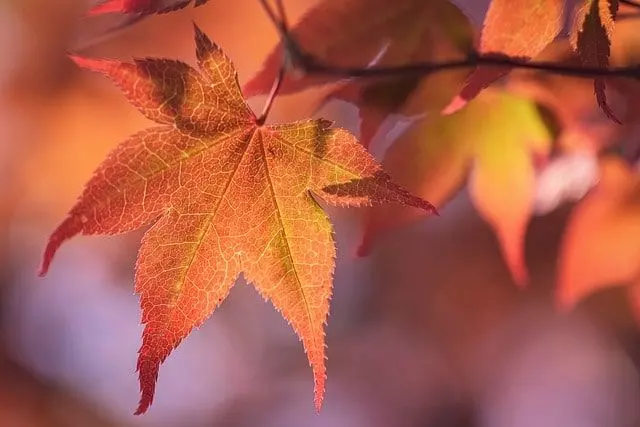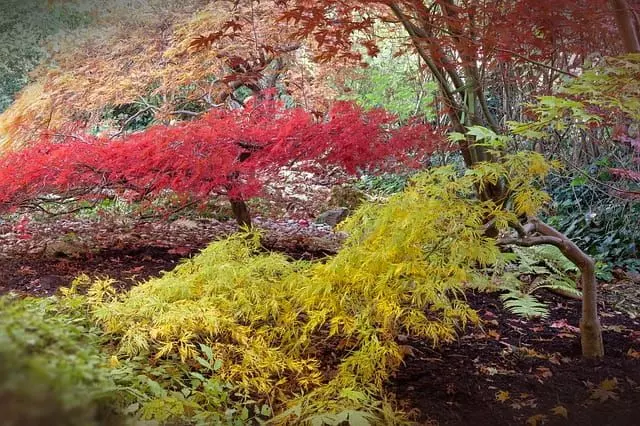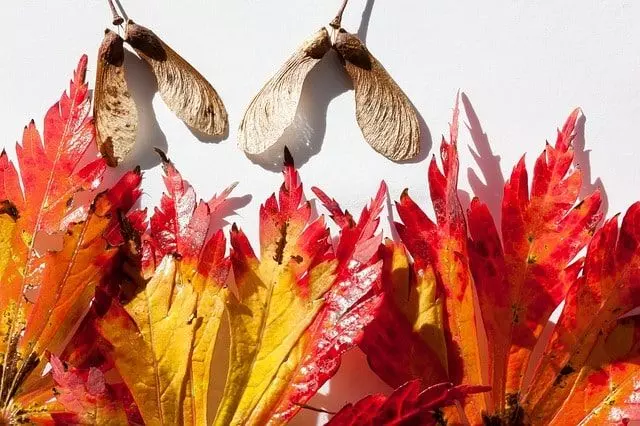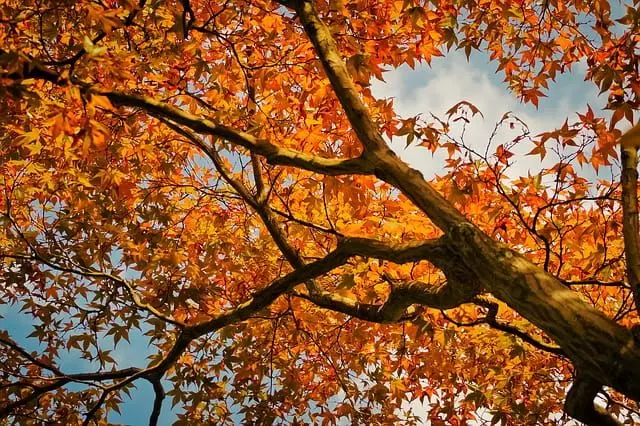The Japanese maple is one of the undisputed stars of gardens, green spaces, and even balconies throughout the world. Its characteristic webbed leaves, which turn warm and striking shades of red in autumn, are its best known and most appreciated signature, which is why it is also often chosen to give life and charm to streets and avenues. Learn all about Japanese maple care instructions in this article.
Table of Contents
Characteristics of Japanese Maple
Acer palmatum is a deciduous tree that withstands pruning very well, so it can be grown both in soil and in pots. The Acer palmatum bonsai is one of the most popular, as bonsai enthusiasts find it a particularly beautiful plant that tolerates the demanding processes involved in growing a Japanese maple bonsai.
How long does it take to grow a maple and how long does a Japanese maple grow? The Acer palmatum grows an average of up to 33 ft (10 m) in height, although there are varieties that reach more than 49 ft (15 m). It is also true that grown in pots its growth will be much lower, rarely exceeding 10 ft or 13 ft (3 or 4 m). As for how long it takes to grow, a Japanese maple tree will take between 7 and 10 years to reach maturity.
And when does the Japanese maple or red maple flower? Usually its flowering occurs in spring, although it is not as ornamental as its leaves. In autumn, we can see that this maple is full of red leaves, which can range from a light red to a dark, purple-like tone.
Let’s continue to learn more about Japanese Maple Care.

Location and Climate of Japanese Maple
The light requirements and tolerances of this tree depend largely on the climate in which it is located. In cold climates, Acer palmatum tolerates and appreciates full sun exposure, while in Mediterranean climates it is best placed in semi-shade or even shade in particularly warm areas.
The tree can withstand frosts and subtropical climates, with tolerable temperatures between 86°F and -0.4°F (30 ºC and -18 ºC). Above 86°F (30°C), even short exposures to this sun and temperature can cause problems.
Watering Japanese Maple
This species needs quite a regular watering. In the cold months, watering every 48-72 hours will suffice, while in the warm months, the tree’s need for water may require up to 4 waterings per week. As is usual with all plants, a potted Japanese maple will require more frequent watering, as its root system is much less spread out.
Soil or Substrate for Acer palmatum
This is one of the most important points when it comes to knowing how to care for Japanese maple or red maple, as it needs slightly acidic substrates, with a pH between 4 and 6. For this, we can directly use substrate prepared for acidophilic plants. However, we can also prepare our own by mixing two parts of akadama for each part of kiryuzuna, which results in light soil, with great drainage and good aeration.
If you plant your maple outdoors and don’t want to have to add all the substrate around where the tree will go, you can acidify the soil yourself by regularly adding pine needles or iron sulfate, both of which can lower the pH. This method can work especially in limestone soils, which otherwise offer good properties.

Pruning Japanese Maple
This species does not require vital pruning, but the tree will maintain a noticeably better appearance and health if we keep the growth of its branches organized and controlled by regular pruning, especially in cases where space is limited.
It is always recommended to prune it in autumn or at the end of winter before it resumes its activity in spring. It is necessary to remove branches in poor condition, as well as those that intertwine or get in each other’s way as they grow.
Learn more about Japanese Maple Pruning.
Fertilizer for Japanese Maple
It is only necessary during the warm months, being advisable to use a specific fertilizer for acidophilic plants, which will provide the necessary nutrients without altering the acidity balance of the soil. If fast-acting liquid fertilizers are used, it is recommended to alternate one month with a month without fertilizer.
How to Propagate Japanese Maple
This species can be propagated by seeds, which must spend three months in the refrigerator before being planted in seedlings, resulting in between one and two months of germination.
If you want a faster reproduction, the Japanese maple cutting is also a very good option, thanking in this case the contribution of roots, which you can make at home organically and for very little money. Here we explain how to make a natural rooting agent.
Propagation by layering and grafting is also very common among professionals and experts, although these techniques, despite their higher success rate, are also more complex in their application.

Types of Japanese Maples
Japanese maple has three subspecies. The three main types of Japanese maple are Matsumure, Palmatum, and Amoenum. Also, from them, you get a huge variety of cultivars and varieties. Here are some of the varieties of Japanese maple:
- Atropurpureum
- Bloodgood
- Butterfly
- Deshojo
- Dissectum
- Katsura
- Little Princess
- Osakazuki
- Sango Kaku
- Seiryu

